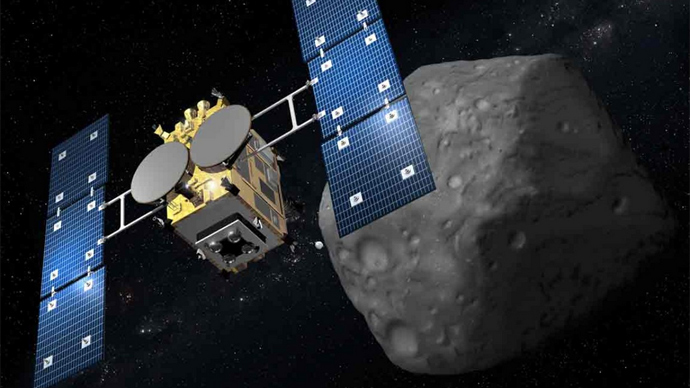Space Station Info : : Space asteroids :: Asteroids Exploration
Asteroid Exploration
Until the age of space travel, asteroids were merely pinpricks of light in even the largest telescopes and their shapes and terrain remained a mystery.

The first close-up photographs of asteroid-like objects were taken in 1971 when the Mariner 9 probe imaged Phobos and Deimos, the two small moons of Mars, which are probably, captured asteroids. These images revealed the irregular, potato-like shapes of most asteroids, as did subsequent images from the Voyager probes of the small moons of the gas giants.The first true asteroid to be photographed in close-up was 951 Gaspra in 1991, followed in 1993 by 243 Ida and its moon Dactyl, all of which were imaged by the Galileo probe en route to Jupiter.
The first dedicated asteroid probe was NEAR Shoemaker, which photographed 253 Mathilde in 1997, before entering into orbit around 433 Eros, finally landing on its surface in 2001. Other asteroids briefly visited by spacecraft en route to other destinations include 9969 Braille (by Deep Space 1 in 1999), and 5535 Annefrank (by Stardust in 2002).
In September 2005, the Japanese
Hayabusa probe started studying 25143 Itokawa in detail and
will return samples of its surface to earth. Following that,
the next asteroid encounters will involve the European Rosetta
probe (launched in 2004), which will study 2867 steins and
21 Lutetia in 2008 and 2010. NASA is planning to launch the
Dawn Mission in 2006, which will orbit both 1 Ceres and 4
Vesta in 2010-2014.
